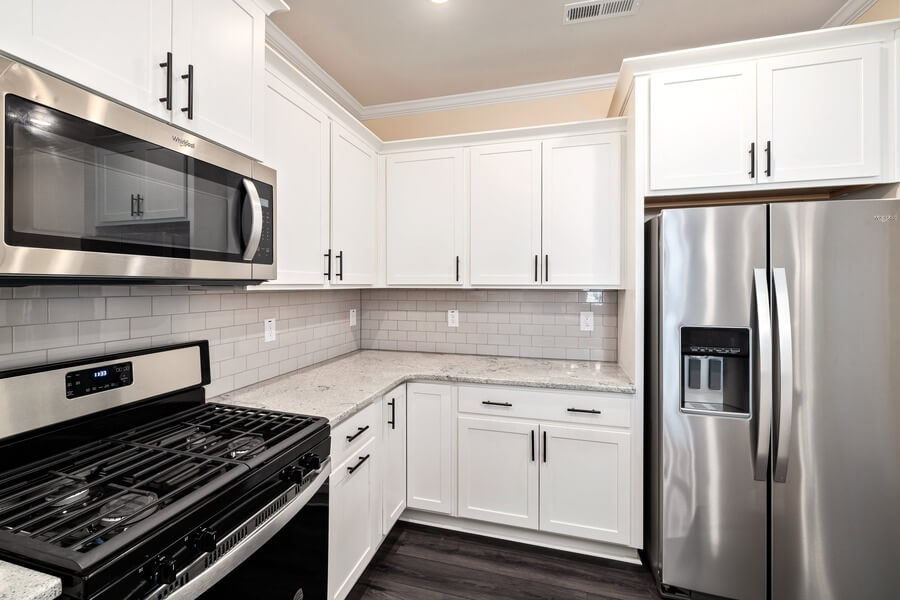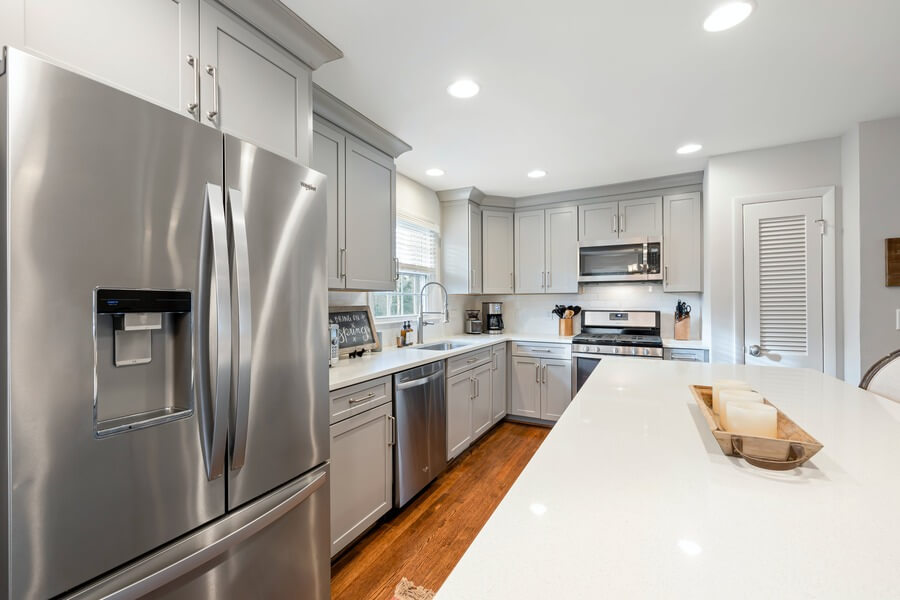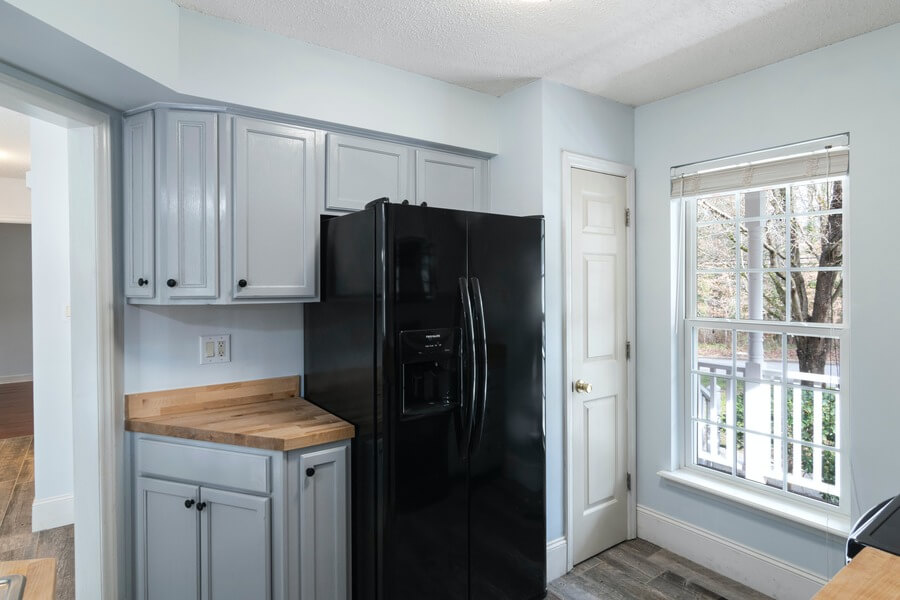
Has it ever happened to you that you’re standing in your kitchen, tired and needing a refreshing glass of water? Then, all of a sudden, you turn to your Whirlpool refrigerator, push the water dispenser, and nothing comes out.
While standing there wondering what could be wrong, you remove the water filter, and the water flows smoothly. Well, that can get just about anyone worried. However, we’re here to solve it together.
In this article, we’ll dive deep into this intriguing situation where your Whirlpool refrigerator water dispenser only works without a filter. We’ll uncover the underlying causes of this issue and, most importantly, provide you with practical solutions. Let’s get started!
The Mystery Unveiled
Before we unravel the causes and the solutions, let’s understand why your Whirlpool refrigerator’s water dispenser may turn into a picky water dispenser. This issue often leaves many scratching their heads, but there’s always a solution.
The Purpose of Water Filters: Refrigerator water filters aren’t just an optional accessory. They are pivotal in ensuring your water is clean, clear, and impurities-free. Filters remove contaminants, such as chlorine, sediments, and odors, making your drinking water taste and smell better.
What happens when your Whirlpool refrigerator water dispenser works without a Filter?: When your refrigerator’s water dispenser operates without a filter, it bypasses the filtration system. This means you’re getting unfiltered tap water directly from your water source.
While this might be acceptable in areas with exceptionally clean water, there are better choices than this if you’re concerned about water quality.
The Causes of Whirlpool Refrigerator Water Dispenser Only Working Without Filter and How to Resolve Them
Now, let’s delve into the root causes of this filter-related enigma and how you can fix them independently.
There are several potential reasons for this issue. Here are some common reasons why this may happen.
Problem 1- Clogged or Expired Filter
Over time, water filters can become clogged with impurities and reach the end of their practical life. When this happens, the filter can restrict water flow or even block it entirely. If your filter is clogged or past its recommended usage period, it may need replacement.
How to Resolve It
Symptoms: Slow or no water flow when the filter is in place.
The first suspect on our list is the water filter itself. Over time, filters can get clogged, like a traffic jam on a hot summer day. Here’s how to clear the path:
1. Check the filter and Replace it: Start by inspecting your current water filter. If you suspect your filter is clogged or has reached its expiration date (usually indicated on the filter or in the manual), it is time for a change. Follow the installation instructions provided with your new filter, locking it securely in place. Consult your refrigerator’s manual to find the correct replacement filter model. Most filters have a twist-and-lock or push-button mechanism to secure them. The filter type can vary, so it’s crucial to get the right one.
2. Flush It Out: After installing the new filter, run the water dispenser for a few minutes. This process helps clear out any trapped air inside the filter and activates its filtration capabilities. Initially, you might notice some sputtering or cloudy water as the air bubbles are purged, but this should improve over time.
3. Regular Maintenance: To prevent future clogs, note the recommended filter replacement schedule in your refrigerator’s manual. Regular maintenance can keep your water flowing smoothly.
Problem 2- Incorrect Installation
The water filter needs to be correctly installed for it to function properly. If it is not securely locked in place or if the seals and O-rings are damaged, it can lead to issues with water flow. Ensure the filter is inserted correctly, following the manufacturer’s instructions in your refrigerator’s manual.
How to Resolve It
Symptoms: Water filter not securely locked in place, leading to slow or no water flow.
The installation of your filter is crucial. Here’s how to ensure it’s done right:
1. Secure the Filter: Proper installation is key. Double-check that the filter is securely locked in place. When inserted correctly, the filter should produce a noticeable click, indicating it’s securely connected. If it doesn’t click into place, remove and reinsert it.
2. Check Seals and O-rings: Examine the seals and O-rings around the filter. Any damage to these components can cause leaks or disrupt water flow. If you notice any issues, replace them.

Problem 3 – Air Bubbles
When you change the water filter, air can become trapped in the filter or the water lines. These air bubbles can obstruct the water flow, slowing it or preventing it from dispensing altogether. To address this, run the water dispenser for a few minutes after changing the filter to clear out any trapped air.
How to Resolve It
Symptoms: Slow water flow after filter replacement.
When you change the water filter, air can get trapped in the lines. Here’s how to release those bubbles:
1. Clear the Air: After installing the new filter, run the water dispenser for a few minutes. This helps expel any trapped air, allowing water to flow smoothly. During this process, you may notice air bubbles in the water. This is normal and should improve as the air is purged from the system.
2. Repeat If Necessary: In some cases, you might need to repeat this step if you still experience slow water flow. Take your time getting the result; patience is critical.
Problem 4- Faulty Filter Bypass
Many Whirlpool refrigerators come with a filter bypass plug. This plug is used when a filter is not in place. If the bypass plug is damaged or not inserted correctly, it can lead to water dispenser problems. Ensure the bypass plug is connected correctly, or consider getting a replacement from the manufacturer if needed.
How to Resolve It
Symptoms: The water dispenser doesn’t work with a filter, but it’s fine without one.
Here’s how to check and address this issue:
1. Verify the Plug: Ensure that the filter bypass plug is correctly inserted in place of the filter. It should fit securely. If it is not securely held, adjust it accordingly.
2. Damaged Plug: If the bypass plug is damaged or lost, contact the Whirpool customer service for a replacement. If you know your way around appliances and their spare parts, you can order a replacement filter online. A faulty plug can disrupt the water dispenser’s functionality.
With these steps, you can solve the mystery of your Whirlpool refrigerator’s water dispenser that only works without a filter.

Wrap Up
In the world of refrigerator issues, the case of the Whirlpool water dispenser that prefers its drinks unfiltered is a head-scratcher. But with the right solutions, you can put this mystery to rest and enjoy clean water with ease.
Remember, a well-maintained filter not only improves taste but also ensures the purity of your drinking water. The next time this happens, don’t worry because you are fully equipped with the technical know-how. Cheers to clean, great-tasting water.
